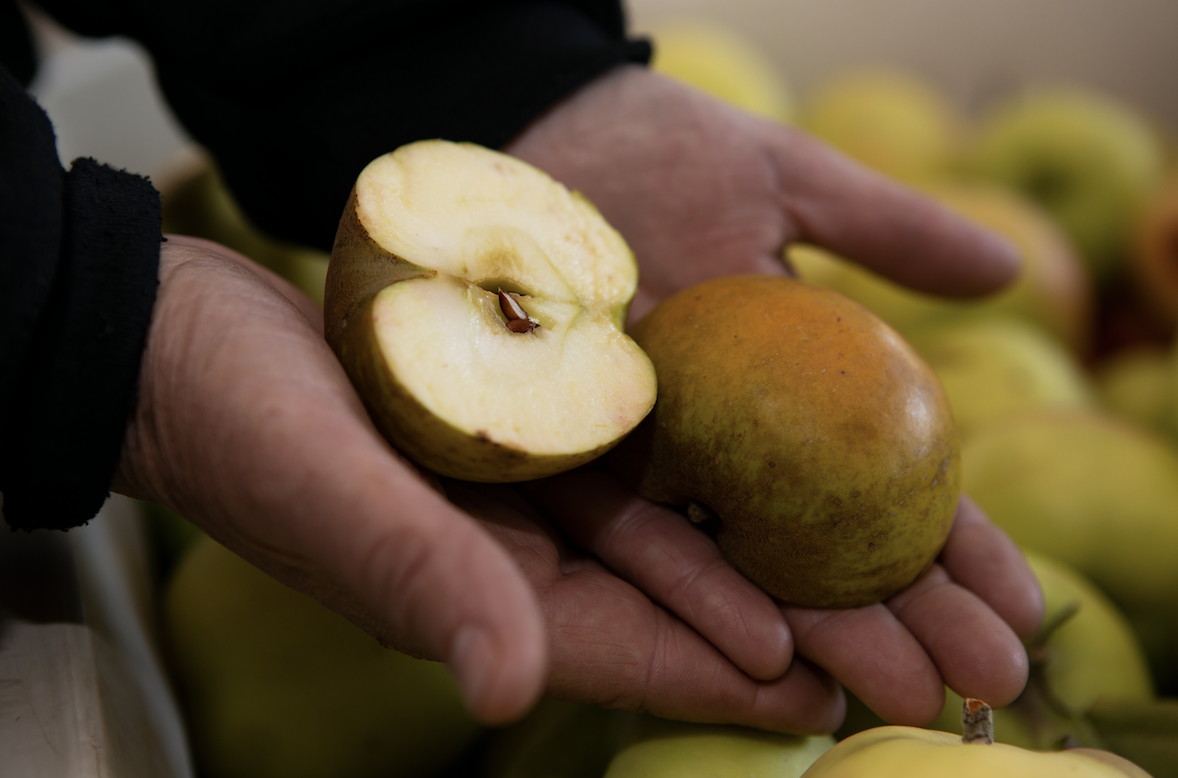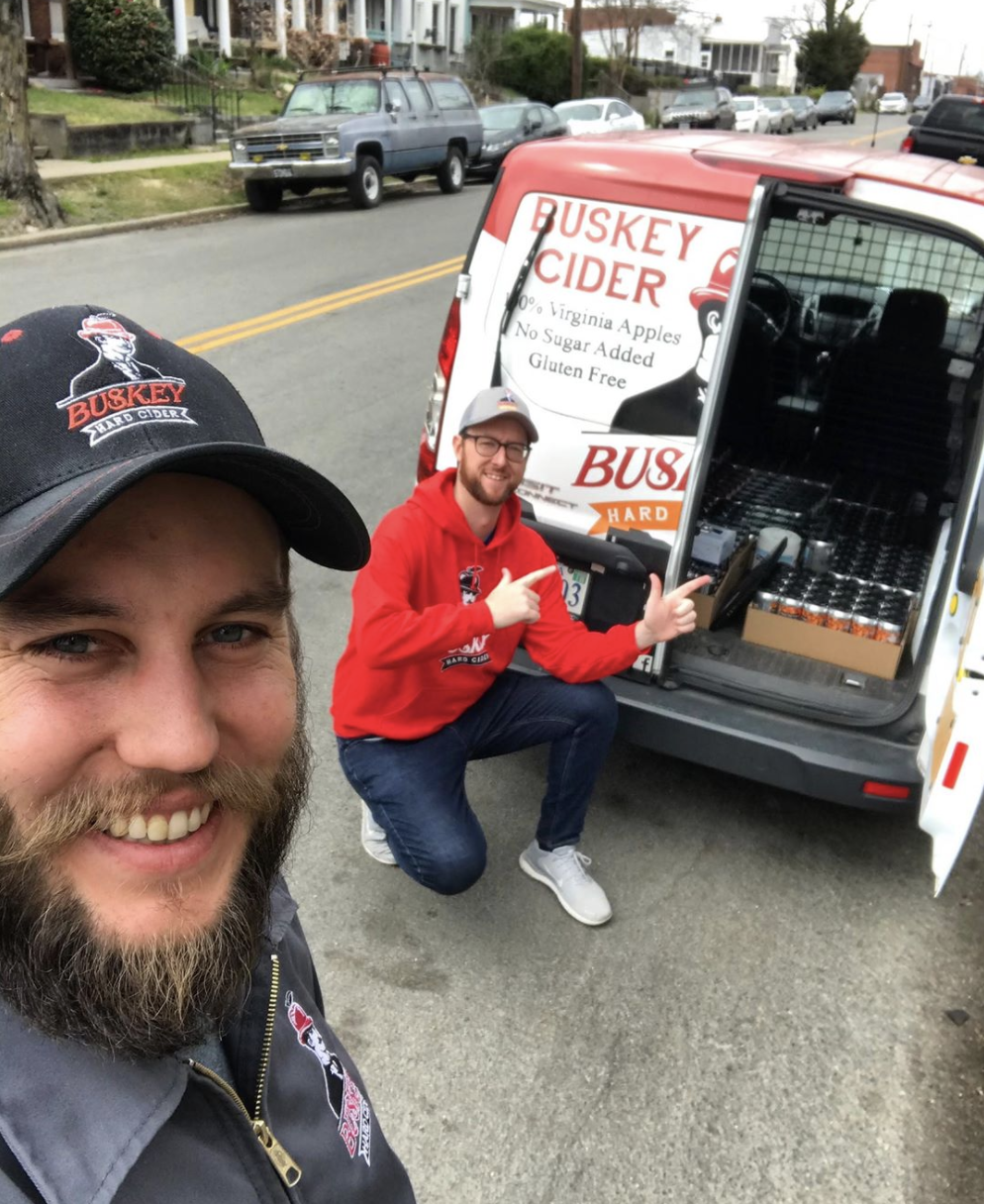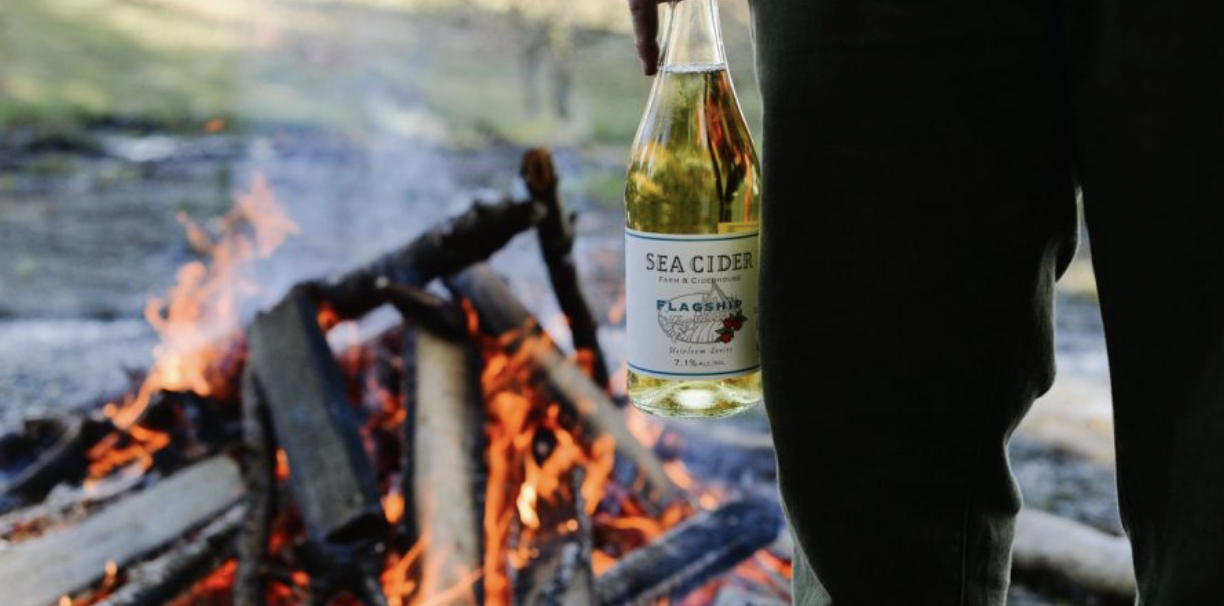Congress Passes PPP Critical Improvements

Today, Congress passed a bill that aims to address concerns over the structure of the federal Paycheck Protection Program (PPP). The program has been a bittersweet solution for cideries who have had to consider laying off staff due to state-mandated tasting room closures. Yes, it provided needed funds to pay employees. But the restrictions on using those funds without repayment didn’t quite make sense in our pandemic world. Here is how the reform bill headed to the President’s desk changes the program:
- The original PPP program required the loan funds to be spent within 8 weeks of receiving them. Today Congress expanded that period to 24 weeks.
- The original PPP program required that 75% of the funds be used for payroll. Today Congress reduced that requirement to 60%.
We thank our members for letting us know the challenges you faced with the PPP program. We’ve been able to share that feedback with congressional offices who in turn utilized your stories and others to fix the program.
Read more: Senate approves House-passed Paycheck Protection Program reform bill
SBA Re-Opens EIDL For Ag Biz Only
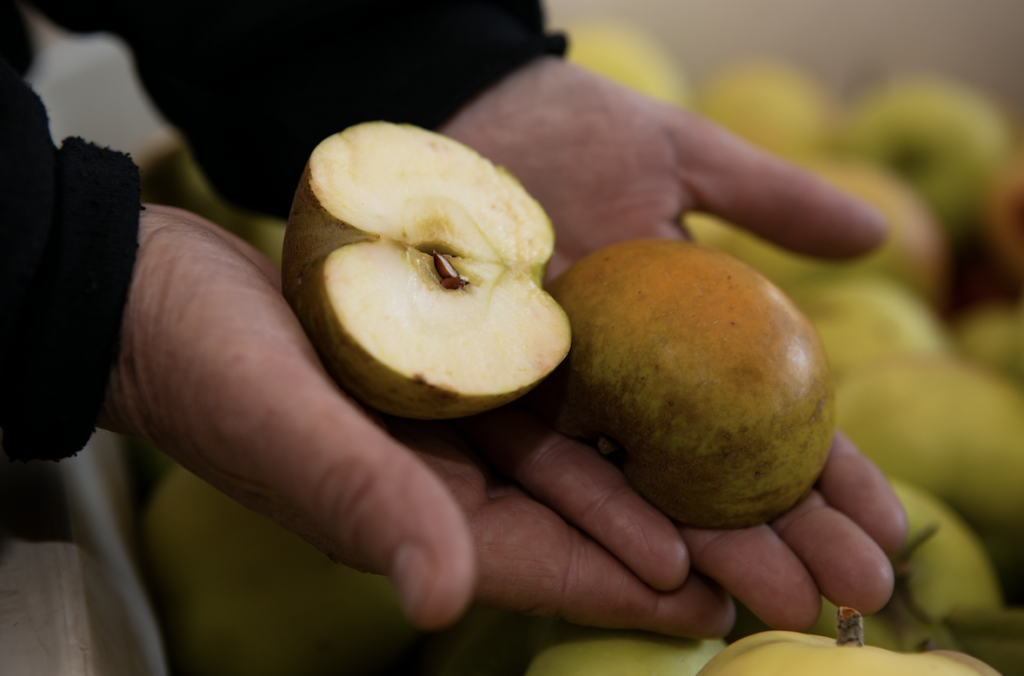
When the SBA first started offering Economic Impact Disaster Loans (EIDL) with an associated cash-advance to help counter the impact of the Corona virus on small businesses, farm-based businesses were disqualified from applying. Farming advocates were hopeful that the USDA was going to provide financial relief to those businesses as prescribed by the CARES Act, but the roll-out of such relief remains to be seen.
SBA’s Corona-relief programs have faced enormous demand, and congress had to recently add more resources to the programs to keep them running (PPP & EIDL). The demand for the EIDL loans was so great that the SBA ran out of funds long before all the applications were assessed. When the CARES 2 Act, as it’s sometimes called, provided more funding for EIDL, the queue of unprocessed applications was so long the SBA decided to keep the application closed.
Recently, the SBA has decided to reopen applications but for agricultural businesses only. The Small Business Act defines agricultural enterprises as “businesses engaged in the production of food and fiber, ranching, and raising of livestock, aquaculture, and all other farming and agricultural related industries.” Eligible agricultural businesses must have 500 or fewer employees. There are two qualifying questions when applying for an EIDL. The first question asks what type and size of business you are applying for. “Applicant is an agricultural enterprise with not more than 500 employees” is one of the options.
Reopening of EIDL is good news for apple suppliers, orchards, farm-stand cideries and other agricultural enterprises in the cider industry.
The EIDL application for agricultural enterprises is available here.
ACTION ALERT: Low-interest loans are helpful, but much more is needed to support the cider community. Congress needs to be reminded that this industry is in dire need of support.
As one of our members recently shared: “Our sales are down 60%. I’ve had to furlough 92% of our staff….It’s a sink or swim in dangerous water situation, and our elected officials need to know.”
Read more about what the American Cider Association and Craft Beverage Coalition are asking for:
American Cider Association Virtual Listening Tour
Virtual Listening Tour: May 12-15
We’re hitting the virtual road! Please join the board of the American Cider Association for a listening tour next month. What you can expect:
- Program & resource updates from Executive Director Michelle McGrath, including the legislative & compliance landscape for cider and COVID-19 pandemic updates
- Virtual Listening Session led by Michelle with your Regional Board Chair
- Informative Guest Speakers
We hope you’ll join us with your questions and comments on the national landscape for cider and the American Cider Association’s involvement. Please note that to keep this meeting productive, we are limiting the meeting to pre-registered participants and a password is required (received upon registration).
LINKS TO REGISTER CAN BE FOUND BELOW
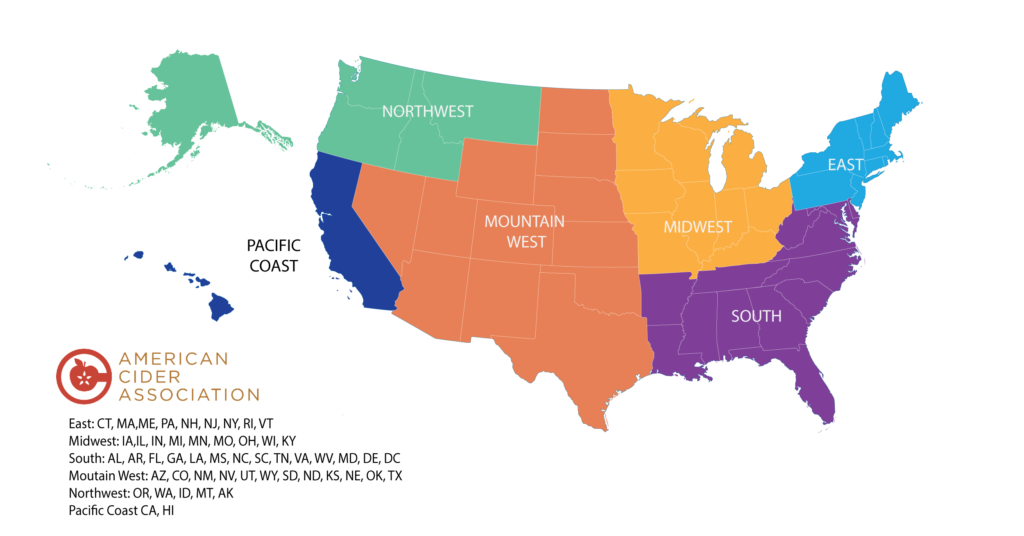
–>Tuesday, May 12: American Cider Association Virtual Listening Tour: Eastern Region
–>Tuesday, May 12: American Cider Association Virtual Listening Tour: Midwest Region
–>Wednesday, May 13: American Cider Association Virtual Listening Tour: Southern Region
–>Wednesday, May 13: American Cider Association Virtual Listening Tour: Mountain West Region
–>Thursday, May 14: American Cider Association Virtual Listening Tour: Pacific Coast Region
–>Friday, May 15: American Cider Association Virtual Listening Tour: Northwest Region
P.S. Have questions you’d like to send in advance? We’d love to hear them! Let us know what you’re thinking.
Craft Beverage Coalition Calls for Day of Action 4/22

Urge Congress to Approve Economic Relief from COVID-19 for Craft Beverage Alcohol Producers
Members of the Craft Beverage Coalition representing the nation’s brewers, distillers, vintners, cidermakers and mead producers are hosting a “Call to Action” on Wednesday, April 22 to urge Congress to provide much needed economic support for the industry. As a result of “stay at home” orders issued by state officials, craft producers are struggling to stay afloat as they take innovative steps to keep the doors open, including curbside pickup and local delivery options as well as the production of hand sanitizers and disinfectant sprays. The CARES Act provided initial relief, but much more must be done. The coalition is asking Congress to provide more economic relief so that businesses can weather this crisis, return to normal operations once the crisis is over, and continue supporting jobs and state economies across the country while providing consumers with their favorite products to enjoy responsibly.
The Coalition is asking Congress to take the following actions:
- Suspend all federal excise tax obligations on domestic and imported alcohol products, effective January 1, 2020, through December 31, 2020 so producers can dedicate scarce resources to payroll and other operating costs.
- Enact a permanent extension of the Craft Beverage Modernization and Tax Reform Act (H.R. 1175/S. 362), which now has bipartisan support from 74 senators and 343 representatives and would provide certainty amidst economic instability.
- Approve additional funding to support no- and low-interest loan and grant programs administered by the Department of the Treasury and Small Business Administration, including the Paycheck Protection Program and Economic Injury Disaster Loans.
- Authorize the Department of the Treasury to create a Workforce Stabilization Fund for the hospitality and travel sectors that will allow distilleries, breweries, wineries, and cideries to keep workers employed, maintain operations, and meet financial obligations.
- Create temporary tax incentives that encourage consumers to return to on-premise dining and drinking establishments when public health officials determine it’s safe. Examples include reinstating the expanded business entertainment tax deduction and creating a new, temporary travel tax credit equal to 50% of any expense for meals, lodging, recreation, transportation, or entertainment while traveling away from home within the U.S.
- Encourage the Administration to work with our trading partners to simultaneously suspend tariffs on beer, wine, and distilled spirits products and our supply chain partners.
Join the Call to Action and help craft producers seek much needed economic relief.
5/9/20 Updates on SBA Resources
There’s a lot of information (and a lot of MISSING information) regarding stimulus funds currently. Here are a few new pieces of info to know:
+According to the SBA, lenders supporting PPP loans “must make the first disbursement of the loan no later than 10 calendar days after the loan is approved.” Read more
+The Treasury is expected to start dispersing stimulus checks by April 10 Read more
+The government is releasing informing guidelines on many of the SBA resources on what seems like a rolling basis. Although the good news is that “EIDL Loan advances will start to be distributed this week,” the SBA has released at least in some places that the advances are for “$1000 per employee up to $10,000 max.” This is different than what was previously said.
+Farmers do qualify for PPP loans, but as of today, they do not qualify for EIDL loans. We are advocating for farmers to qualify for EIDL loans and for specialty crop support in the USDA earmarked stimulus funds of the CARES ACt. To learn more about what resources are available to farm-based businesses, check out our webinar with Penn State Extension on Monday, April 13.
+Congress is struggling to find a path forward for a bipartisan proposal that would expand the Paycheck Protection Program (PPP). It is recognized by both parties that expanding the program is necessary.
TTB Postpones Excise Tax Due Dates

The TTB announced on March 31 that they will postpone excise tax filing and payment due dates for 90 days. The full announcement and details of their plan can be read in their newsletter.
The craft beverage coalition, which the American Cider Association is proud to support, asked for excise tax relief in a joint letter on March 19.
In the announcement, the TTB acknowledged that the alcohol industry is hurting due to the COVID-19 pandemic.
“The Alcohol and Tobacco Tax and Trade Bureau (TTB) recognizes that businesses that we regulate are being severely impacted by COVID-19. To assist these businesses during this period, we are postponing several filing and payment due dates for 90-days where the original due date falls on or after March 1, 2020, through July 1, 2020.”
The American Cider Association applauds the TTB for responding to the needs of the industry during this time.
Ask a professor: Is it safe to order cider right now?
Anna Katharine Mansfield is an Associate Professor of Enology at the Cornell Craft Beverage Institute in Geneva, NY. We met Anna Katharine during the New York Cider Association’s Virtual Town Hall and followed up with some questions for our members about how to protect employees and customers from the novel Corona virus.
ACA: Is it safe to order cider for curbside pickup, delivery or online?
AKW: Yes! It’s safe, and it’s a great way to support your local cidery in a challenging time.
ACA: What is the best protocol for ensuring cideries are safely packing product for shipping or delivery with respect to the novel Corona virus? For our employees and for the product?
AKW: The good news is that you don’t need to do anything extra to ensure that your products are safe. COVID 19 is not an environmental pathogen, so continuing to follow routine cleaning and sanitizing protocols will eliminate and deactivate it. It’s also not a food-borne illness, so there’s no risk of it somehow getting into your cider and infecting a consumer. The greatest risk is person-to-person transmission, so employees within your facility should follow appropriate hand washing and social distancing protocols. It’s also a good idea to assess the high-traffic areas of your facility, like doorknobs and light switches, and clean them more frequently than you would normally; that will help prevent virus transmission if an employee is sick but asymptomatic. You can find a template for COVID 19 strategy protocols and a checklist of frequently-touched surfaces here: https://instituteforfoodsafety.cornell.edu/coronavirus-covid-19/risk-management-strategy-checklist/
ACA: How long does the virus live on cans? glass? cardboard?
AKW: We have no scientific data on aluminum or glass survival time, but do have data on cardboard, plastic, and stainless steel. In a highly-controlled lab environment, COVID 19 could be detected for up to 24 hours on cardboard, 48 hours on stainless steel, and 72 hours on plastic. It’s important to remember, however, that this experiment occurred under ideal circumstances for the virus- the surfaces were inoculated with a relatively high titer, and were protected from outside intervention. COVID 19 will not survive as well, or nearly as long, under the normal stresses of packaging and shipping. And while we don’t have experimentally-determined numbers for aluminum cans or glass, data from studies of other viruses suggests that detection times for aluminum will be similar to stainless steel, and glass will likely be less than that. COVID 19 doesn’t have extraordinary factors that would allow it to act differently than other known viruses.
ACA: Can someone contract COVID-19 from handling a packaged cider with the virus on it?
AKW: There is no evidence that COVID 19 can be transmitted via packaging, but for readers who are still nervous, we can walk through the hypothetical situation that would put a consumer at the most risk. A fictitious employee is sick, and coughs on the packaging, or wipes their nose and doesn’t wash their hands before touching the product, and manages to deposit a high concentration on the package. The consumer receives the package while the virus is still viable, touches it in exactly the spot where the virus was deposited, and then touches their own face without washing their hands. That’s a really tenuous chain of events, *all* of which have to happen- and there are several places where thoughtful intervention will break the chain. Sick employees shouldn’t be handling product; all employees should be washing their hands frequently; orders can be packed up and set aside for a time prior to pick up or delivery; and well-informed consumers are also washing their hands frequently. It’s quite a stretch, when you think of all the variables that have to line up just right.
ACA: What advice should cideries give customers to limit their risk?
AKW: If your product is distributed in exterior cardboard packaging, you can simply tell consumers to remove it and recycle it. The cans or bottles within the box will be perfectly safe. If they’re buying exposed cans or bottles, the best advice is to simply wash their hands after bringing products into the house. If they’re really concerned, they can wash the outside of the can or bottle with soap and water, but that’s not necessary- it’s just going too make them feel better. Letting them know that your employees are following appropriate cleaning and sanitizing protocols should help.
ACA: How do you ensure social distancing with deliveries and DTC online sales?
AKW: Your best bet is to have a plan in place ahead of time. Think through the steps that will happen with each delivery or sale, and figure out where social distancing risks may occur- then create protocols to avoid them. For instance, the person making the delivery can call ahead and arrange a place to leave the package so the consumer can pick it up without making direct contact. It’s wise to take payment remotely, via phone or internet, if at all possible. DTC consumers can call ahead to order, and pick up pre-packaged orders at the door or curb. With a little advance planning, social distancing should be easy.
ACA: Any other tips you want to share?
AKW: The most important thing to remember is that the danger lies in person-to-person transmission, not food borne or environmental transmission. All employees should be trained specifically in social distancing and proper hand washing techniques, and no one should come to work if they suspect that they’re ill. A rapidly growing list of FAQs and resources can be found at the Institute of Food Safety’s COVID 19 page: https://instituteforfoodsafety.cornell.edu/coronavirus-covid-19/food-industry-resources/
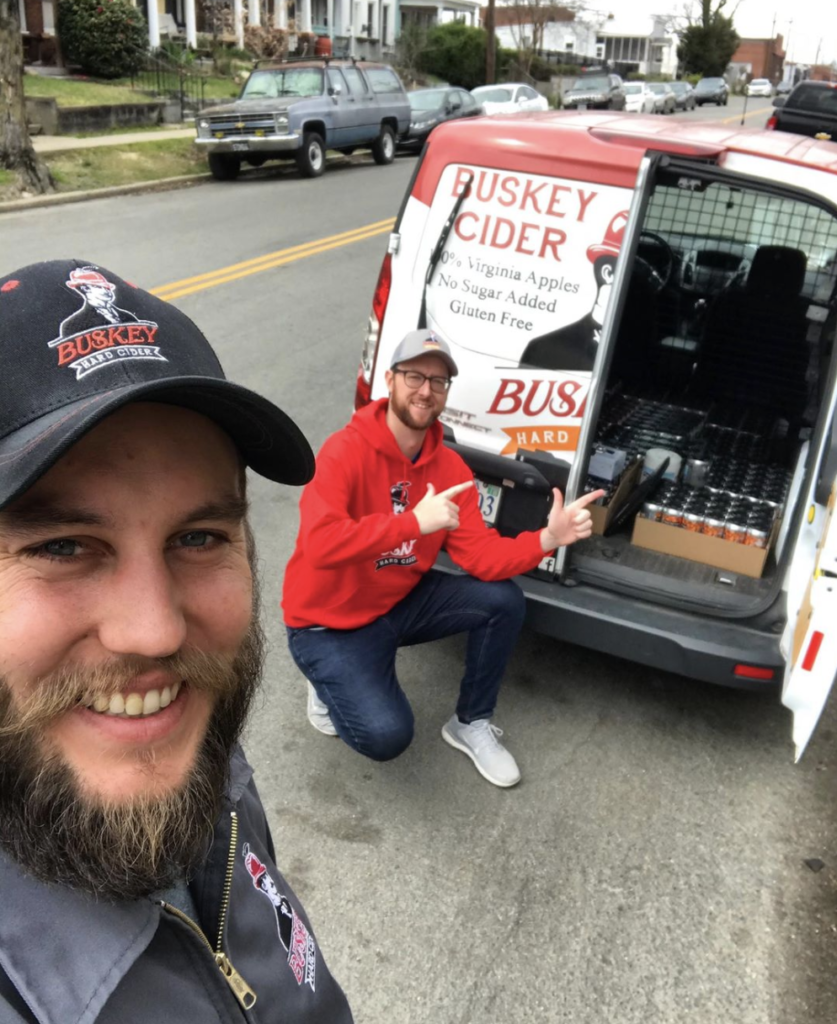
COVID Resources for Canadian Cideries
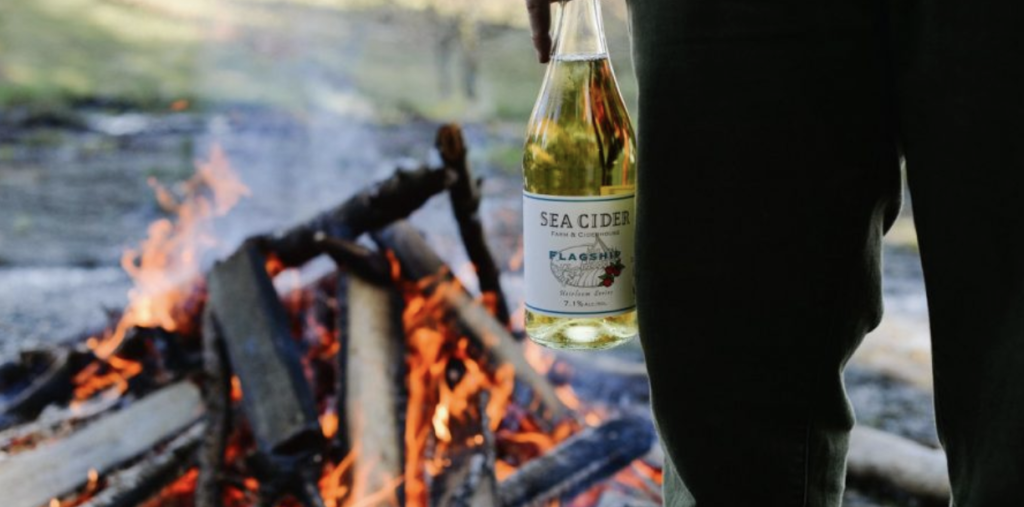
Hello! This is Kristen Needham Jordan from Sea Cider in British Columbia, Canada. American Cider Association has asked me to compile COVID Crisis information for the benefit of the ACA’s Canadian members, so here goes…
I’m sure I have met many of you over the years at CiderCon, Cider Summits or cider events in Canada. For those who don’t know me, I am the owner/operator of a small orchard-based cidery on Vancouver Island called Sea Cider. The COVID Crisis has hit Sea Cider hard, in several different ways, and while we are seeing an increase in sales through our online store, the overall impact has been a huge hit to our revenue and ability to cover our operating expenses.
Here are some parts of our COVID Crisis Plan:
- The goal of our crisis management plan is to improve Sea Cider’s “cash on hand” position as quickly as possible. Financial support from lenders will work in tandem with other crisis management measures Sea Cider is taking to “weather this storm” and position ourselves to bring business back up to normal levels once the health crisis has passed.
- Since sales through our Tasting Room, event sales, farmers markets, keg sales and all US sales have all stopped, we are focusing our sales & marketing efforts on our two remaining revenue streams: direct-to-consumer online sales, and bottle wholesales within BC. We have laid off some staff, significantly reduced hours for production staff, switched to work at home for sales and administrative staff and are pursuing the following supports that have been announced in Canada:
Federal Government Support
- GST remittances can be deferred until June
- Launch of a special emergency business account for small businesses that will see banks offer $40,000 government-guaranteed loans interest-free for the first year. If certain conditions are met, the first $10,000 will be forgiven.
- Friday morning, the Bank of Canada announced an unscheduled interest rate cut, slashing the key interest target by half a percentage point to 0.25 per cent
- Temporary Small Business Wage Subsidy – Will calculate 75% of payroll for the effective period (up from the 10% announced a week ago), back dated March 15th, which is subtract from the payroll remittance payment for the period: https://www.canada.ca/en/revenue-agency/campaigns/covid-19-update/frequently-asked-questions-wage-subsidy-small-businesses.html
- Work Share Program (for temporary business down turn): https://www.canada.ca/en/employment-social-development/services/work-sharing.html
- The Canada Emergency Response Benefit (CERB), which will provide $2,000 a month for up to four months for workers who lose their income as a result of the COVID-19 pandemic. Learn more at https://www.canada.ca
Provincial Government of BC Support (*Note from Michelle: Do you have information about your province? Let us know–we’re happy to share here).
- Health tax payments will be deferred until Sep 2020 with no penalties or interest:
- PST payments will be deferred until Sep 30 2020
- WCB Premium payments are being deferred
- Rental support of $500/month that individuals may access if they are tenants
Banks and Lenders
- Farm Credit Canada is setting in place both emergency lending and Interest payment deferral for farms with existing loans
- Commercial banks, such as RBC and TD, are supposed to be offering interest payment deferrals, but credit limits have not been loosened so this may be difficult for companies to access who are already max’d out
Other Suppliers
- BC Hydro is allowing businesses to defer payments. Contact them when your next bill arrives so your payment isn’t automatically processed from your bank account.
- Finally, we have been talking to some of our key suppliers to stretch out payments
Other Useful Links
- Canada’s COVID-19 Economic Response Plan: Support for Canadians and Businesses
- https://covidcontinuity.com/
Good luck out there, and stay safe ~
In cider,
–Kristen.
Senate Passes the CARES Act
The US Senate just passed the CARES Act, or what is commonly known as the Phase III COVID-19 economic stimulus package. The bill includes many things (here is a good summary), but 3 things in particular will help the cider industry.
- It puts cash directly in the pockets of most Americans
- It extends unemployment and expands it to include sole proprietors and contractors
- It funds small business loans to cover payroll support, mortgage payments, insurance premiums and other debt obligations. Loans used for these qualified purposes may be forgiven
We are working around the clock to address the challenges you are facing due to the COVID-19 pandemic. Our goal is to remove barriers that will make it difficult for cideries to continue operating as normally as possible as soon as possible. We’ve been working with regulators and lobbying Congress to get you the relief that you need.
It’s believed that an additional stimulus package may come together in a couple months to address certain specific industry needs, hopefully including ours. We have champions and political power because we create manufacturing jobs and agriculture is core to our being. We are Main Street.
Americans Are Stocking Up on Cider
It’s no secret that shopping patterns have dramatically changed since it became clear that the Corona virus was here. The subject of endless memes, grocery shelves–especially the toilet paper section–are picked clean as people stock up for the long haul. According to Nielsen’s off-premise sales data, consumers are also stocking up on cider.
Off-premise sales in the channels measured by Nielsen show cider retail sales up 22% for the week ending on March 14 compared to the week ending on March 7. Other segments of beverage alcohol also saw increases.
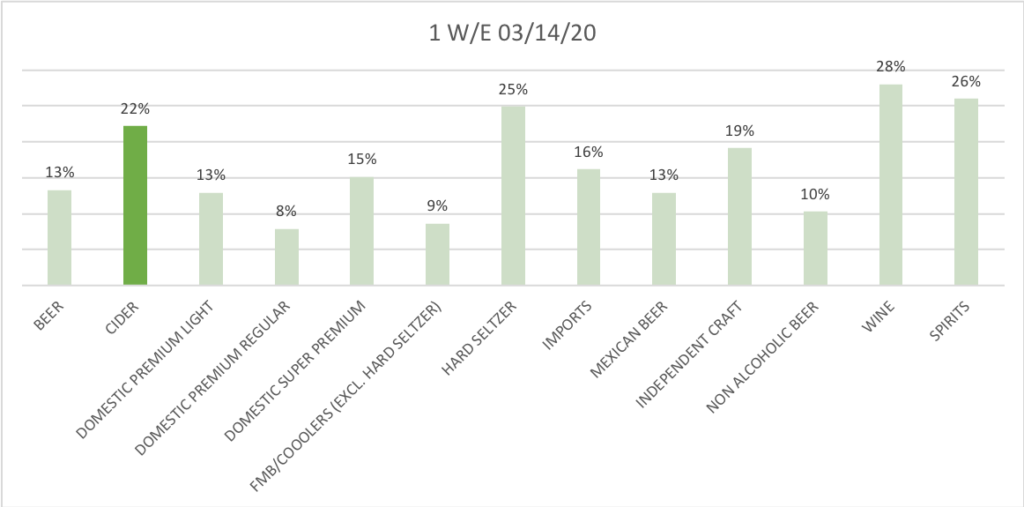
Changing Retail Landscape
American Cider Association members across the country have seen sometimes dramatic changes in how their customers are buying cider. Offering local delivery has earned more dollars than previously average taproom earnings for many smaller cideries. It will be interesting to speak with online retailers to see how e-commerce shopping patterns change for cider in the coming weeks.
In an average year, on-premise sales account for roughly 60% of cider’s total sales according to Nielsen CGA (compared to 40% for beer as estimated by the Brewer’s Association). This 60/40 breakdown of on-/off-premise sales for cider doesn’t include cidery taproom or independent retailer sales. Still, it’s safe to say we will see a dramatic shift in on-premise’s dominance in cider’s marketshare in the coming weeks. Expect to see business model adaptions to continue and include curbside, delivery and online retail.

